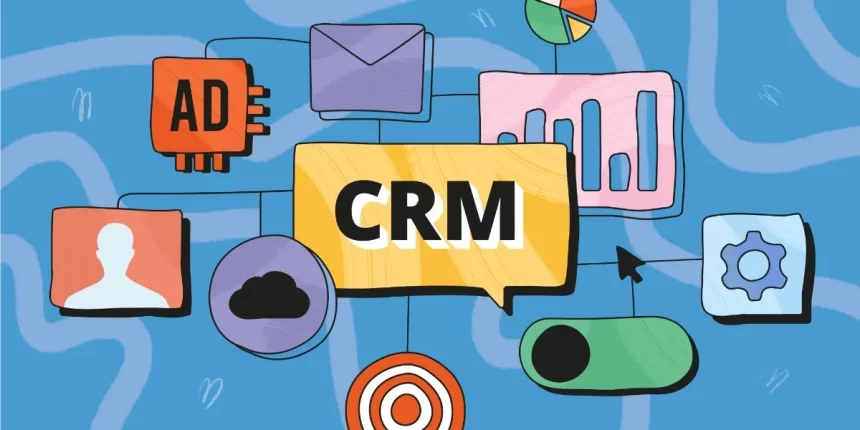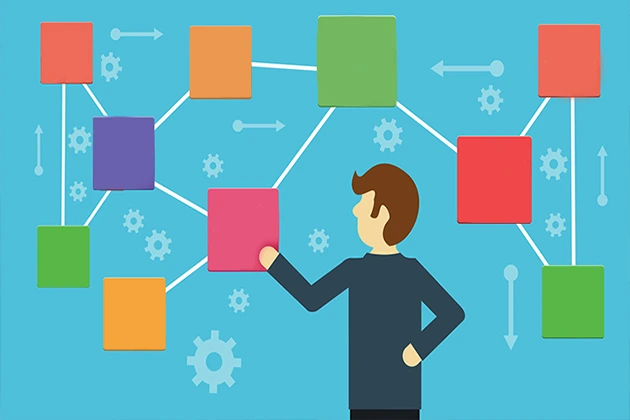Most people think that a CRM system is only for sales teams, but that’s not the case. A CRM system can be used by any team in an organization. It’s especially important for customer-facing teams, like marketing and support. But what are the best ways to use a CRM system? Here are 10 tips to get you started.
But what is it – CRM?
CRM, or customer relationship management, is a system that helps you manage your interactions with customers and prospects. It can help track leads and sales opportunities, as well as provide insights into customer behavior and preferences. And it can be used by any team in an organization not just sales teams.
So why do you need it?
There are many benefits to using a CRM system, including:
First and foremost, it can help you track customer interactions more effectively which is crucial if you want to provide great service and retain your customers.
It can also give you valuable insights into customer behavior, preferences, and needs, allowing you to target your marketing efforts more effectively.
And finally, it can help you, designing a CRM system more effectively, so you can close more deals.
There are many ways to take advantage of a CRM system. Here are just a few tips to get you started:
1. Review your customer data and identify any inaccuracies
The first step to improving your CRM system is ensuring that you have accurate, up-to-date customer data. This means reviewing your existing customer information for any errors or inconsistencies and updating it as necessary. It can also be helpful to regularly review your customer data periodically throughout the year so that you are always working with the most recent information available.
2. Customize your CRM system to match your business processes
Your CRM system should be tailored to your specific business needs and processes. If a CRM system doesn’t fit with the way your team works or doesn’t have the features you need, it won’t be very effective. Spend some time investigating different CRM systems to find one that meets your needs and is easy to use. Browse through the top CRM apps for sales that can be customized to suit your sales team’s workflow and improve productivity. Look for features like lead tracking, customer segmentation, and automation tools that will streamline processes and enhance communication within your team.
3. Train employees on how to use the CRM system effectively
Even if you’ve chosen the perfect CRM system for your team and customized it to match your business processes, it won’t do much good unless your employees know how to use it effectively. This means giving them thorough training on how to use the system, including helpful tips and tricks that they might not otherwise discover on their own. Also, consider providing occasional refresher courses to help keep your team’s skills honed.
Connect with other teams and departments to share customer data
One of the best ways to use a CRM system is by connecting it with other systems in your organization, such as marketing automation software or contact center solutions. This can help you gather even more valuable insights into your customers and prospects, allowing you to better target your marketing and sales efforts. And it can also help you provide a more cohesive customer experience across all departments.
4. Use the CRM system to track customer interactions and sales cycles
A CRM system is a powerful tool for tracking customer interactions and sales cycles. This means that you can gain valuable insights into how your team is interacting with customers, as well as the effectiveness of different lead generation strategies. It also makes it easier to analyze the sales pipeline and identify any bottlenecks or areas where you could improve efficiency. Moreover, a CRM system can help you identify which customers are most likely to be interested in your products or services, allowing you to focus your marketing efforts on these individuals.
5. Automate routine tasks using workflow rules
A CRM system allows you to automate routine tasks using workflow rules. This can save your team a lot of time and effort, while also ensuring that important tasks are never missed or overlooked. For example, you could set up automated reminders to follow up with a customer after they have been inactive on your website for a certain period, or to send out a personalized email offer if they haven’t purchased in a certain amount of time. in addition, you can set up rules to automatically route leads and other customer data to the appropriate team members, so that sales emails are sent out promptly and follow-up calls are made promptly.
6. Generate reports to help you make better business decisions
In addition to tracking customer interactions and sales cycles, a CRM system also allows you to generate reports that can help you make better business decisions. Some of the key metrics you might want to track include website traffic, conversion rates, average order values, churn rates, and more. By analyzing this information regularly, you can identify trends in customer behavior, improve your marketing and sales strategies, and ultimately grow your business more effectively.
7. Integrate the CRM system with other applications used by your company
To get the most out of your CRM system, it’s important to integrate it with any other applications that you use within your company. This can include things like email marketing platforms, project management tools, and customer support applications. By integrating these different systems, you can streamline workflows and ensure a more efficient process overall.
8. Use social media features to connect with customers
In addition to using a CRM system to track customer interactions and sales cycles, you can also use it to connect with customers on social media. This can help you build brand awareness and drive traffic to your website or physical location. Some common social media features that are included in CRM systems include built-in messaging capabilities, automated responses, and the ability to schedule posts in advance.
9. Manage user permissions and security settings
It’s important to manage user permissions and security settings within your CRM system. This will ensure that only the appropriate employees have access to sensitive customer information, and can help you protect your customers’ privacy as well as your company data. Some common user permissions include read-only access for certain team members, the ability
10. Extend the functionality of the CRM system with third-party add-ons
Finally, to get the most out of your CRM system, it’s a good idea to extend its functionality with third-party add-ons. This can help you do things like collect feedback from customers, manage customer support tickets more effectively, or even run e-commerce and online shopping cart functions.
Conclusion
Overall, a CRM system is a powerful tool for managing customer interactions and sales cycles. It allows you to automate routine tasks, generate reports that can help you make better business decisions, connect with customers on social media, manage user permissions and security settings, and much more. To get the most out of your CRM system, it’s important to analyze the sales pipeline and identify bottlenecks, automate routine tasks using workflow rules, integrate the CRM system with other applications used by your company, use social media features to connect with customers and extend its functionality with third-party add-ons.
Do you have any questions about how to use a CRM system to improve your business? Let us know in the comments, and we’ll be happy to help!











